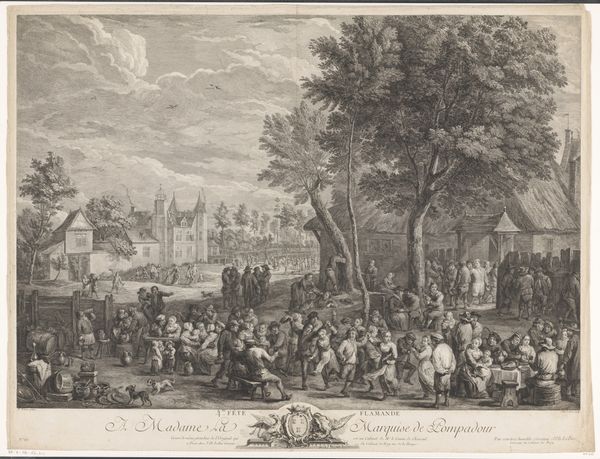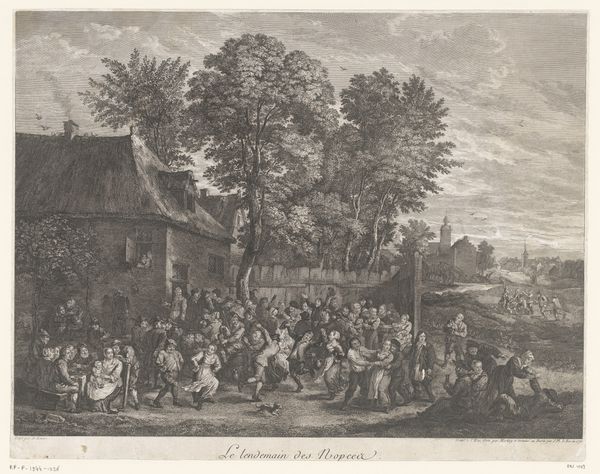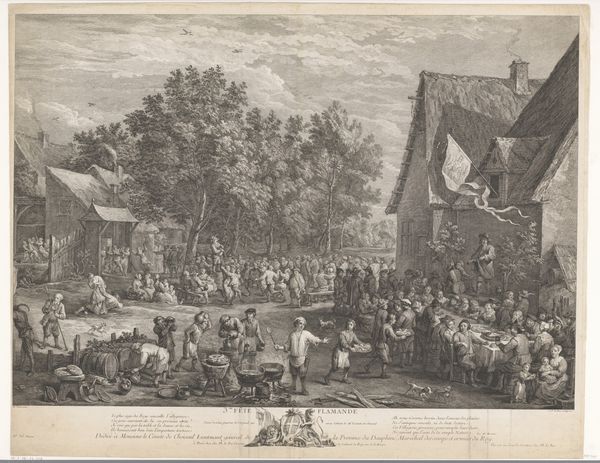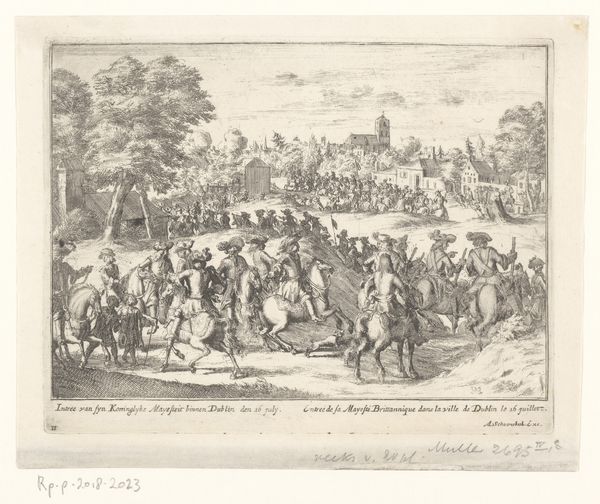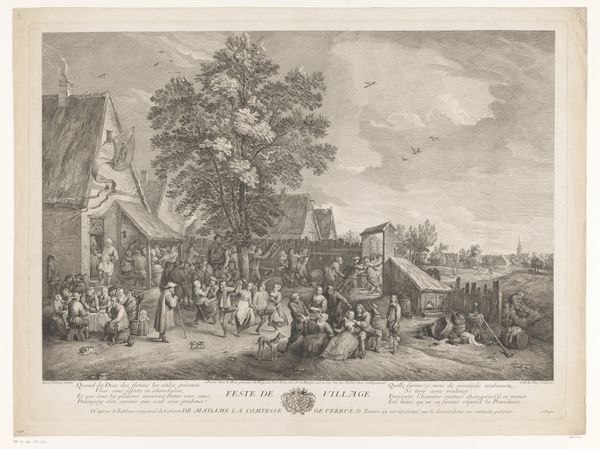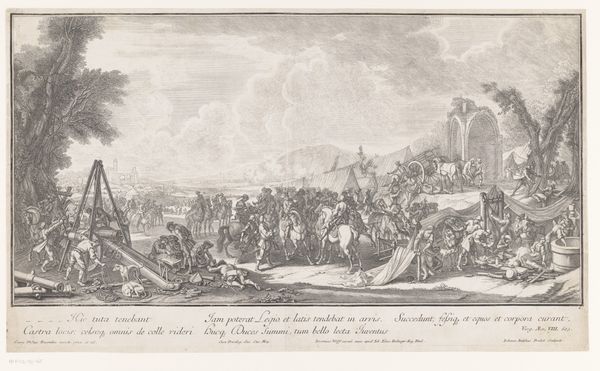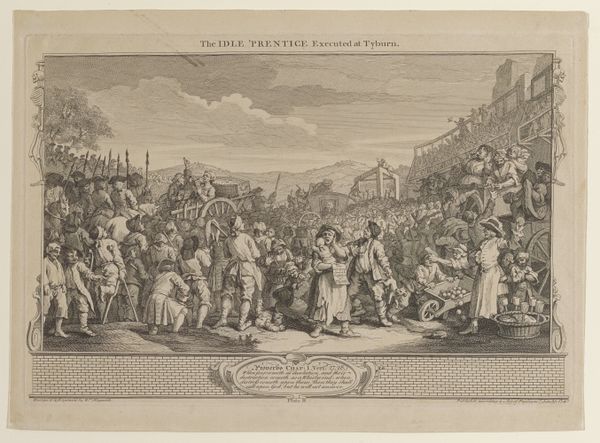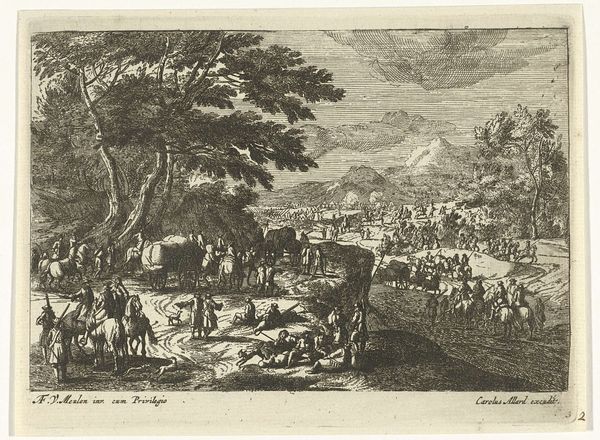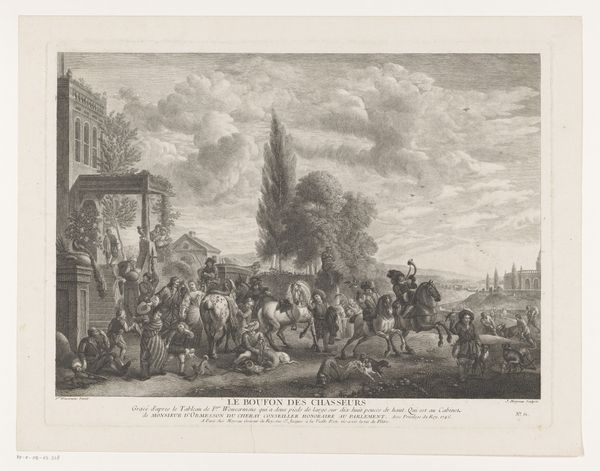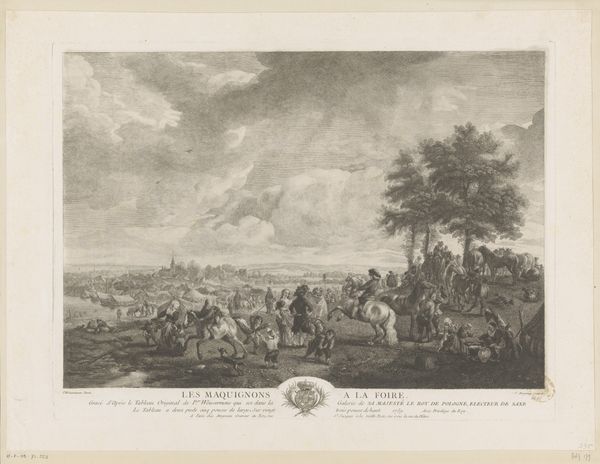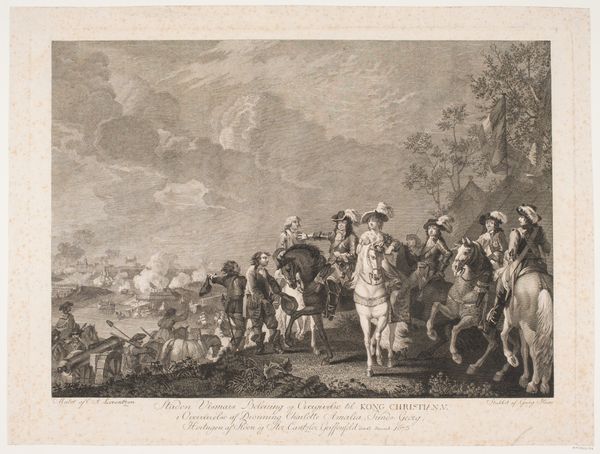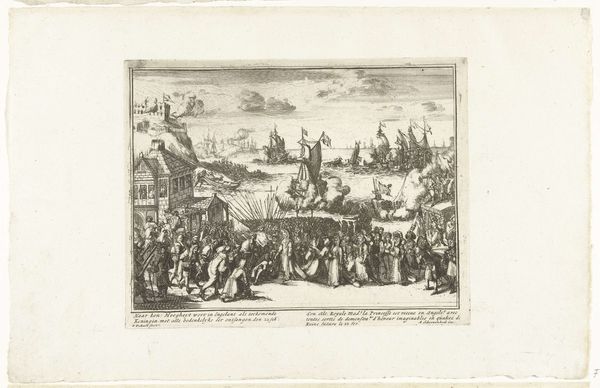
Dimensions: height 303 mm, width 369 mm
Copyright: Rijks Museum: Open Domain
Pietro Antonio Martini made this print, Boerenfeest, using etching and engraving, in the late 18th century. The image is of a peasant festival, and the printmaking techniques used to create it are themselves deeply connected to social and economic structures. Etching and engraving are both intaglio processes, meaning that the image is incised into a metal plate, which is then inked and printed. Engraving is a very labor-intensive process, requiring great skill and precision to carve the image directly into the metal. Etching, on the other hand, uses acid to bite the image into the plate, which allows for a more fluid and expressive line. The combination of these two techniques in Boerenfeest speaks to the complex relationship between handcraft and industrial production. While engraving represents the traditional artisan's skill, etching suggests the potential for mass production and the division of labor. By focusing on the material and the making, we can begin to understand the social and cultural significance of this print, which bridges the fine arts and the world of craft.
Comments
No comments
Be the first to comment and join the conversation on the ultimate creative platform.
